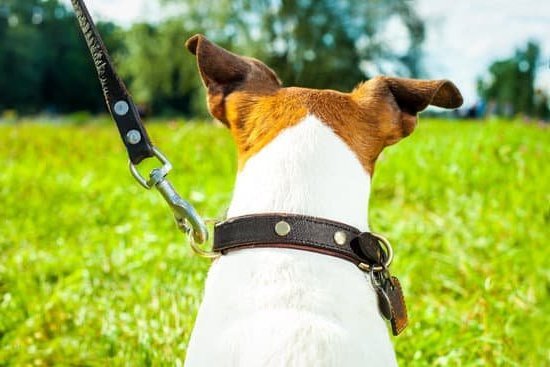How do I train my dog to stay home? Many pet owners face the challenge of leaving their furry companions at home while they go about their daily activities.
It can be worrying and stressful to leave a dog alone, especially if they struggle with separation anxiety. In this article, we will explore the various methods and techniques for training your dog to stay calm and relaxed when alone, as well as how to create a safe and comfortable environment for them.
Leaving your dog at home can present several challenges, not only for the pet but also for the owner. Understanding your dog’s needs, especially when it comes to separation anxiety, is crucial in creating a positive experience for both you and your pet. By establishing a routine, using positive reinforcement, and providing ample exercise and mental stimulation, you can help your dog feel content and secure while at home.
In this article, we will delve into the different aspects of training your dog to stay at home, from understanding their behavioral needs to addressing problem behaviors such as barking or destructive actions. We will also discuss how to gradually help your dog adjust to longer periods alone, ultimately leading to a happy, healthy, and well-behaved pet while you are away.
Understanding Your Dog’s Needs
Dogs are known for being loyal and loving companions, often forming strong attachments to their owners. This bond can lead to separation anxiety when the dog is left alone at home. Separation anxiety can manifest in various behaviors such as barking, whining, destructive actions, or even self-harm. It’s important for dog owners to recognize these signs and understand how to address them.
To help your dog overcome separation anxiety, it’s crucial to create a safe and comfortable environment at home. This includes providing a cozy sleeping area, access to water and toys, as well as leaving comforting items with your scent. Additionally, establishing a routine can help reduce your dog’s anxiety by providing a sense of predictability about when you will leave and return.
One effective way to ease separation anxiety is through gradual independence training. This involves slowly getting your dog accustomed to being alone for short periods of time and gradually increasing the duration. It’s important to use positive reinforcement during this process by rewarding calm behavior and ignoring anxious reactions. By understanding your dog’s needs and taking steps to address separation anxiety, you can help them feel more secure and relaxed when left at home alone.
- Create a safe space for your dog with comforting items
- Establish a daily routine for consistency
- Use gradual independence training with positive reinforcement
Creating a Safe and Comfortable Environment at Home
One of the first steps in training your dog to stay at home is ensuring that they have a safe and comfortable environment to spend time in. This includes providing a designated area for them that is free from hazards and has all the necessary comforts they need.
Make sure your dog has access to fresh water, food, comfortable bedding, and plenty of toys to keep them occupied. If you have a backyard, it’s important to make sure it’s properly fenced and secure to prevent your dog from escaping or getting into trouble.
In addition to creating a physical environment that is safe for your dog, it’s also important to consider their emotional well-being. Some dogs may feel more at ease when they have a cozy den-like space, such as a crate or a designated area in the house where they can retreat to when they feel anxious or overwhelmed.
Providing a sense of security and comfort through their environment can help alleviate any anxiety your dog may experience when left alone at home.
Another crucial aspect of creating a comfortable environment for your dog is ensuring that they have mental stimulation throughout the day. This can include leaving interactive toys, puzzles, or treats for them to work on while you’re away.
Mental stimulation helps keep your dog’s mind engaged and can prevent problem behaviors that arise from boredom or anxiety. By addressing both their physical and emotional needs, you can help create an environment where your dog feels safe, secure, and content when left at home alone.
| Aspect | Considerations |
|---|---|
| Physical Comfort | Fresh water, food, comfortable bedding |
| Emotional Well-being | Cozy den-like space or crate for security |
| Mental Stimulation | Interactive toys, puzzles, treats for engagement |
Establishing a Routine
Benefits of Routine
Dogs thrive on routine and structure, so establishing a consistent daily schedule can greatly benefit their overall well-being. By providing them with a predictable routine, you can help reduce anxiety and stress when it comes to being left alone at home. Dogs are creatures of habit, and knowing what to expect in terms of feeding times, walks, playtime, and nap schedules can help them feel more secure and comfortable.
Creating a Daily Schedule
When training your dog to stay home alone, it’s essential to create a daily schedule that aligns with their natural instincts and energy levels. This may include regular mealtimes, bathroom breaks, exercise sessions, and mental stimulation activities. By incorporating these elements into their daily routine, you can help ensure that your dog is content and relaxed when left alone at home.
Introducing Changes Gradually
While consistency is key in establishing a routine for your dog, it’s also important to introduce any changes gradually. If you need to adjust the timing of certain activities or add new elements to their schedule, do so slowly to allow your dog to adapt without feeling overwhelmed or confused. This approach will help maintain the stability and predictability that dogs crave while still allowing for necessary adjustments as needed.
Positive Reinforcement
When it comes to training your dog to stay home alone, positive reinforcement can be a powerful tool in encouraging good behavior. Rewarding your dog with treats or praise when they exhibit calm and relaxed behavior can help them associate being at home alone with positive experiences. Dogs are motivated by rewards, so using treats and rewards to reinforce desired behavior is an effective training method.
The key to using positive reinforcement effectively is timing. It’s important to give the reward immediately after the desired behavior occurs, so that your dog can make the connection between their behavior and the reward. This will help them understand what is expected of them when they are left at home alone. Consistency is also crucial in using positive reinforcement – always reward the same desired behaviors and avoid rewarding unwanted behaviors.
In addition to treats, you can also use toys, playtime, or verbal praise as rewards for good behavior. It’s important to choose rewards that your dog finds motivating and enjoyable. By consistently reinforcing positive behaviors with rewards, you can help your dog feel more comfortable and secure when they are left at home alone.
The Role of Exercise and Mental Stimulation in Keeping Your Dog Content at Home
When it comes to keeping your dog content at home, providing enough exercise and mental stimulation is crucial. Dogs are naturally active animals, and without proper physical and mental activity, they can become bored, anxious, or even develop destructive behaviors. Here are some ways you can ensure your dog gets the exercise and mental stimulation they need:
- Regular walks: Taking your dog for daily walks is essential for their physical health and mental well-being. It provides them with the opportunity to explore their surroundings, interact with other dogs, and release energy.
- Interactive toys: Invest in interactive toys that can keep your dog engaged and entertained while you’re away. Toys that dispense treats or puzzles that require problem-solving skills are great options to keep your dog mentally stimulated.
- Training sessions: Engaging your dog in regular training sessions not only helps reinforce good behavior but also provides mental stimulation. Teaching them new commands or tricks challenges their cognitive abilities and keeps them mentally sharp.
In addition to preventing boredom and anxiety, regular exercise and mental stimulation can also help prevent behavioral issues such as excessive barking, digging, or chewing. By incorporating these activities into your daily routine, you can help ensure that your dog remains happy, healthy, and well-behaved while at home.
Training Techniques
When it comes to training your dog to stay calm and relaxed when home alone, it’s important to start with understanding their needs and behavior. Dogs are social animals and often experience separation anxiety when left alone. It’s essential to address this issue by gradually getting them used to being alone and creating a safe and comfortable environment for them at home.
One effective technique for teaching your dog to stay calm when home alone is desensitization. This involves gradually leaving the house for short periods of time, starting with just a few minutes and gradually increasing the duration. It’s also important to practice “leaving cues,” such as picking up your keys or putting on your coat, without actually leaving, so that your dog learns these cues do not always result in you leaving them alone.
Another helpful technique is providing mental stimulation for your dog while you’re away. Interactive toys or puzzles can keep them occupied and prevent boredom or anxiety. Additionally, leaving an item of clothing with your scent on it can provide comfort to your dog while you’re away. Consistency is key in training your dog to stay calm when home alone, so be sure to practice these techniques regularly and reward good behavior with treats or praise.
By implementing these training techniques and being patient with your dog, you can help them learn to stay calm and relaxed when home alone. Remember that every dog is different, so it’s important to tailor your approach based on their individual needs and behaviors. With time and effort, you can enjoy a happy, healthy, and well-behaved dog at home even when you’re not there.
Addressing Problem Behaviors
Identifying the Root Cause
When addressing problem behaviors such as barking, whining, or destructive actions, it’s important to first identify the root cause of these behaviors. In many cases, these actions are a result of anxiety or boredom. Dogs may bark or whine when they are feeling anxious or when they are seeking attention.
Destructive actions, such as chewing or scratching furniture, often stem from boredom and excess energy. Understanding why your dog is exhibiting these behaviors will help in finding the most effective solution.
Positive Reinforcement Training
One effective way to address problem behaviors is through positive reinforcement training. Rather than scolding or punishing your dog for undesirable actions, focus on rewarding and encouraging good behavior. For example, when your dog remains calm and quiet while alone at home, reward them with treats or verbal praise. This will reinforce the desired behavior and create an association between being calm and receiving rewards.
Providing Mental Stimulation
Another essential aspect of addressing problem behaviors is ensuring that your dog has enough mental stimulation throughout the day. Interactive toys, puzzle feeders, and regular playtime can help keep your dog mentally engaged and prevent boredom-related behaviors. Additionally, providing adequate physical exercise through walks or play sessions can help alleviate excess energy that may lead to destructive actions when left alone at home.
Gradual Independence
As much as we may want to be with our dogs 24/7, it’s simply not feasible. Whether it’s due to work, errands, or other commitments, there will be times when your furry friend will have to stay home alone for longer periods. Helping your dog adjust to longer periods alone is crucial for their well-being and your peace of mind.
One effective way to help your dog adjust to being alone for longer periods is by slowly increasing the time they spend alone. Start with short intervals and gradually extend the time. This gradual approach helps prevent separation anxiety and allows your dog to get used to being alone in a comfortable and safe environment.
Providing engaging toys and interactive feeders can also keep your dog mentally stimulated during longer periods alone. Dogs are naturally curious and need mental stimulation to stay content. Interactive toys can keep them occupied and mentally engaged while you’re away. Consider puzzle feeders, chew toys, or treat-dispensing toys that can capture your dog’s attention and alleviate boredom.
Another important aspect of helping your dog adjust to being home alone for longer periods is ensuring they have access to water, food, a comfortable resting area, and a designated bathroom spot if needed. Creating a safe and comfortable environment at home will make the experience of being alone more tolerable for your beloved pet.
| Aspect | Tips |
|---|---|
| Increasing Alone Time | Start with short intervals and gradually extend the time. |
| Mental Stimulation | Provide engaging toys such as puzzle feeders, chew toys, or treat-dispensing toys. |
| Comfortable Environment | Ensure access to water, food, a cozy resting area, and a designated bathroom spot if needed. |
Conclusion
In conclusion, training your dog to stay home alone can be a challenging but rewarding process. By understanding your dog’s needs, creating a safe and comfortable environment, establishing a routine, using positive reinforcement, providing exercise and mental stimulation, and implementing effective training techniques, you can help your dog feel calm and relaxed when left alone. Addressing problem behaviors and gradually building independence are also important aspects of training your dog to stay home.
Ultimately, the goal of training your dog to stay home is to ensure that they are happy, healthy, and well-behaved when you are away. It requires patience, consistency, and understanding of your dog’s behavior. With the right approach and dedication, you can enjoy the peace of mind knowing that your furry companion is content and secure at home.
Remember that every dog is unique, so it’s essential to tailor your training methods to suit your specific pet. By putting in the effort to train your dog to stay home alone, you can strengthen the bond between you and provide a fulfilling life for your beloved canine companion.
Frequently Asked Questions
How Do I Train My Dog to Stay at Home?
Training your dog to stay at home involves creating a comfortable and safe environment for them, providing plenty of toys and activities to keep them engaged, and gradually increasing the amount of time they are left alone. Using positive reinforcement techniques such as treats and praise when they stay at home can also help reinforce this behavior.
How Do I Stop My Dog From Keeping Away?
If your dog keeps running away, it’s important to address the underlying reason for their behavior. This could be due to boredom, fear, or lack of proper training.
Ensuring that your dog gets enough exercise, mental stimulation, and attention can help reduce their inclination to run away. Using obedience training and teaching them a solid recall command can also be effective in preventing this behavior.
Is It OK for a Dog to Stay Home All Day?
It is generally not ideal for a dog to stay home alone all day on a regular basis. Dogs are social animals and require mental stimulation, physical activity, and companionship to thrive.
If you have no choice but to leave your dog home alone for an extended period of time, ensure they have access to water, a comfortable place to rest, interactive toys, and potentially consider hiring a pet sitter or using a doggy daycare service to break up their day.

Welcome to the blog! I am a professional dog trainer and have been working with dogs for many years. In this blog, I will be discussing various topics related to dog training, including tips, tricks, and advice. I hope you find this information helpful and informative. Thanks for reading!





